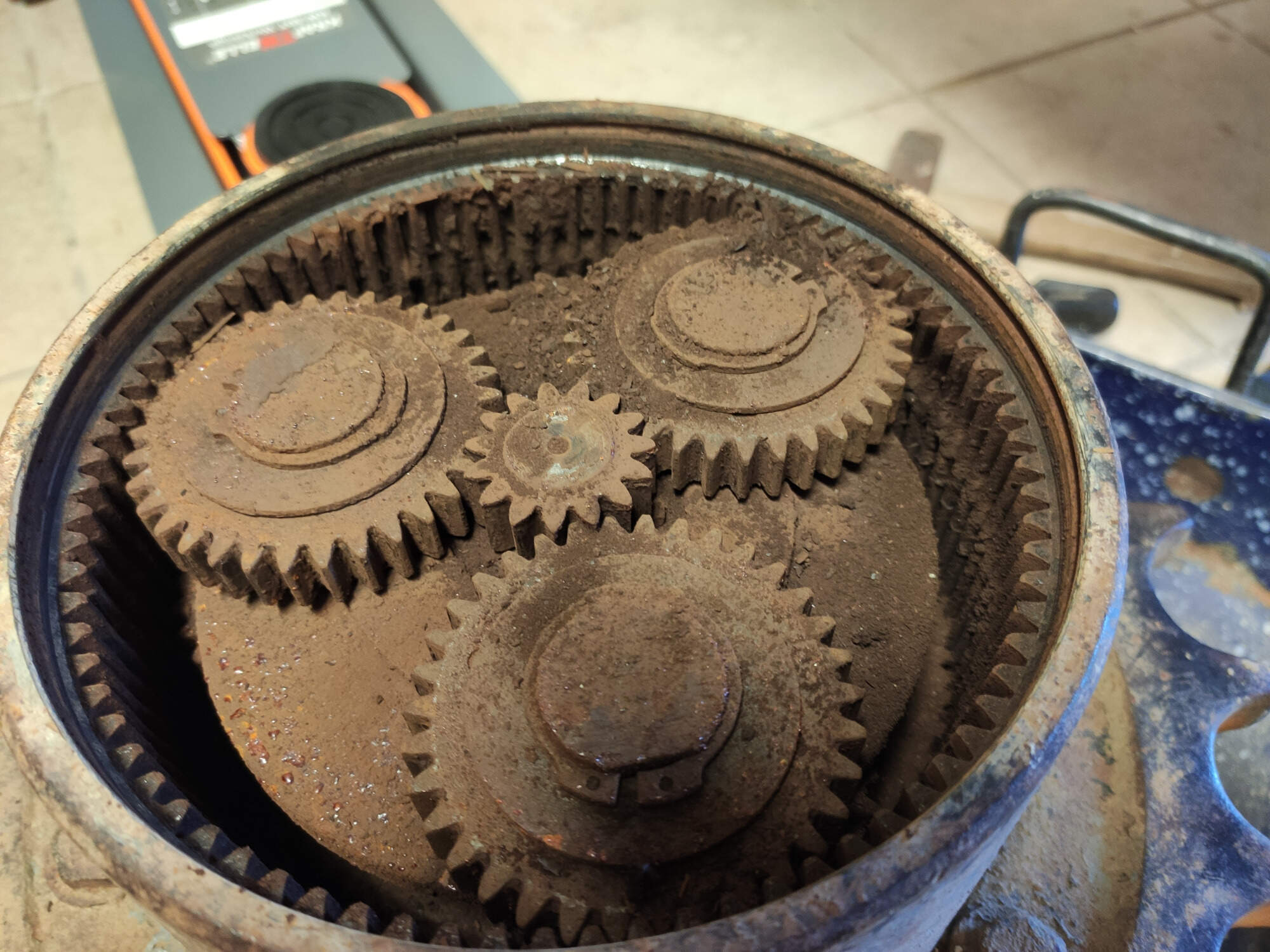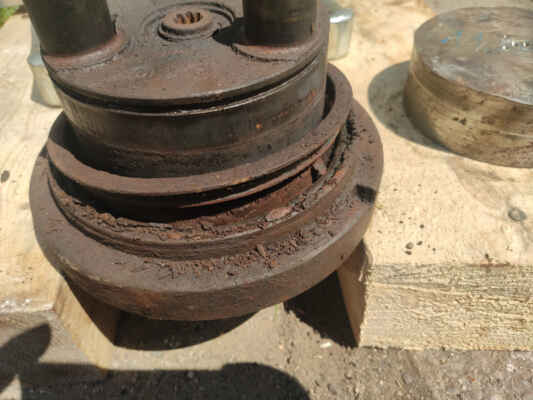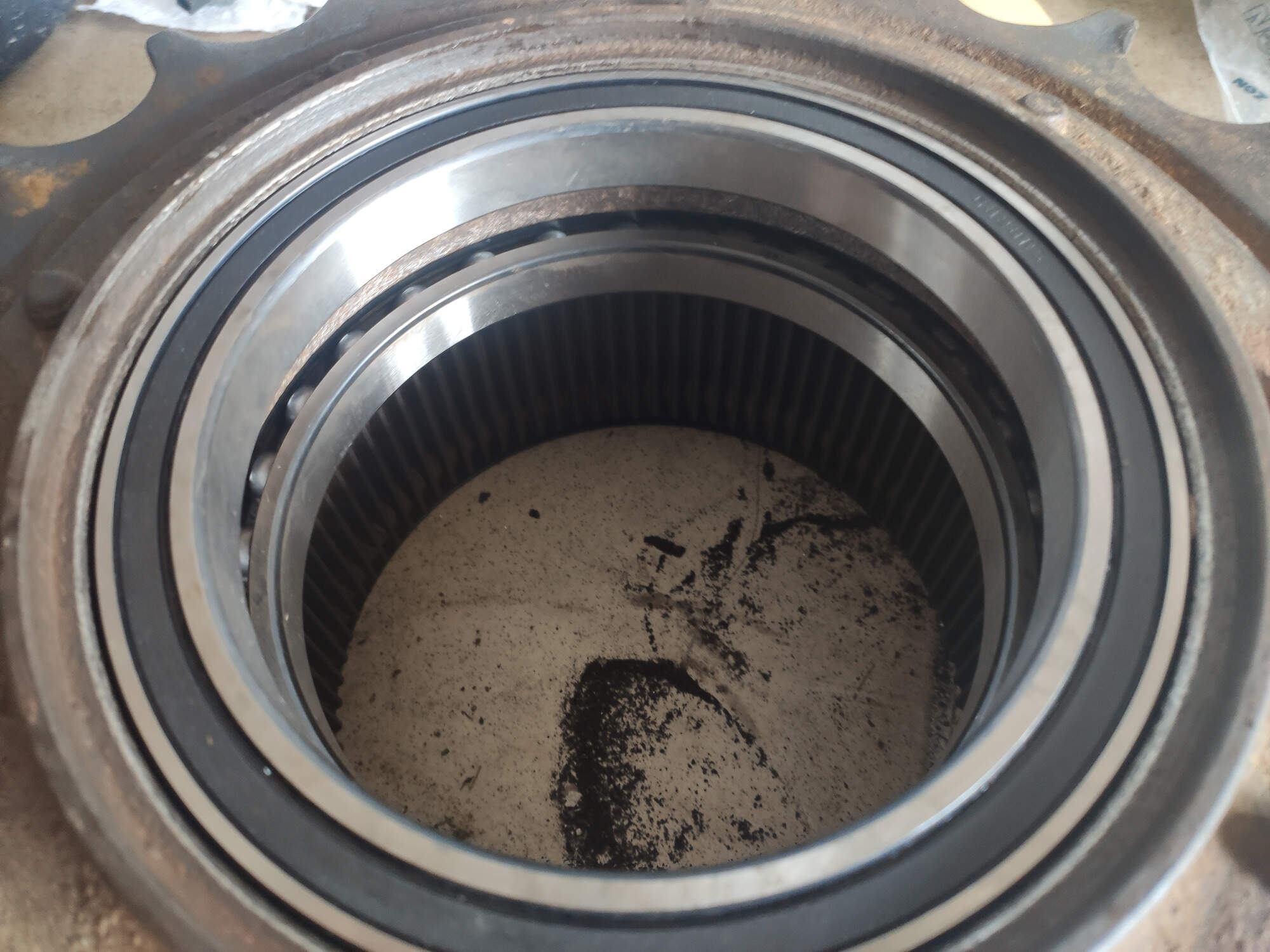I bought Bobcat 331E year 2000 with broken final drive (I didn't know about it at the time) and there was many other problems to solve around the machine so I was driving it for 2,5 years and didn't notice a thing. In May 2022 one of the two bigger bearings finally gave up

Obviously there wasn't oil for years (pervious owner had to give up oil refill too, didn't told me about that). New drive (in Europe) was approx. 5000USD, alternative was about 3000USD so I tried to rebuild that thing, total costs 916 USD + my time (I have minimum tools and no garage/workshop)
The rebuild went very well (if you ignore sweat, blood, multiple small injuries and a lot of tears), the drive is holding all the new oil in it no problem for next 4 months and counting.
At first I thought that problem is in hydraulic part of the final drive so I openned that first... it's a bit hard to put everything back together and keep it clean...
My profession is an accountant by the way, I never visited any "machinery" school or had relatives as mechanics, I just love to dismantle broken things and put them back together fixed (sometimes).
I want to say, that rebuild is possible, depends if it's worth it.





